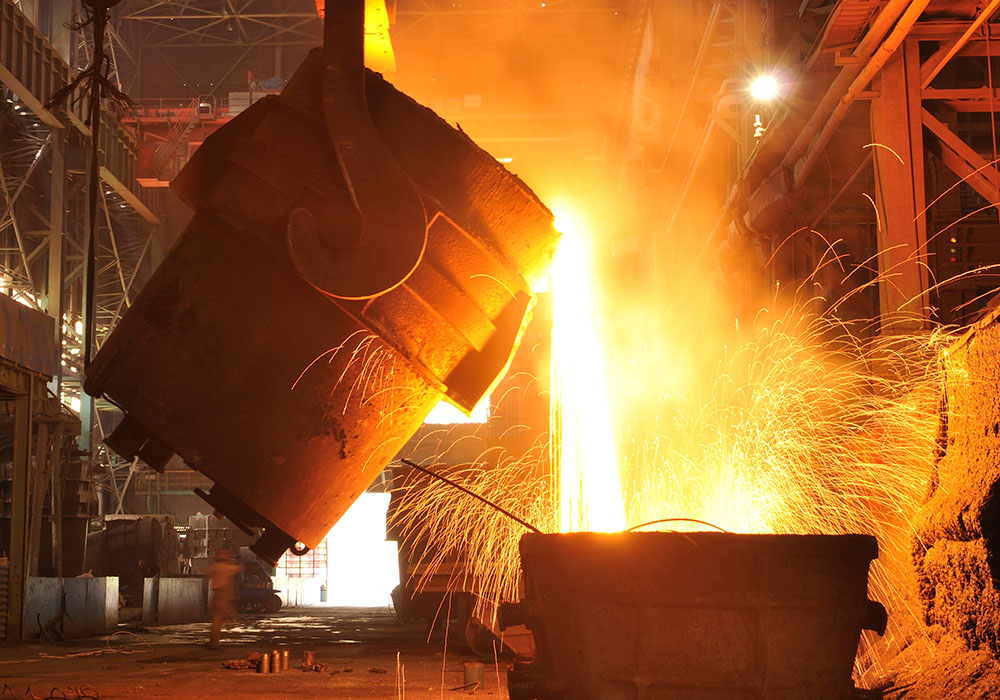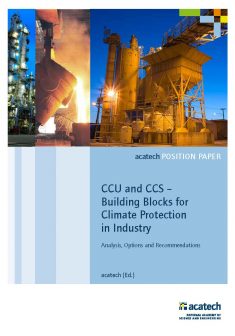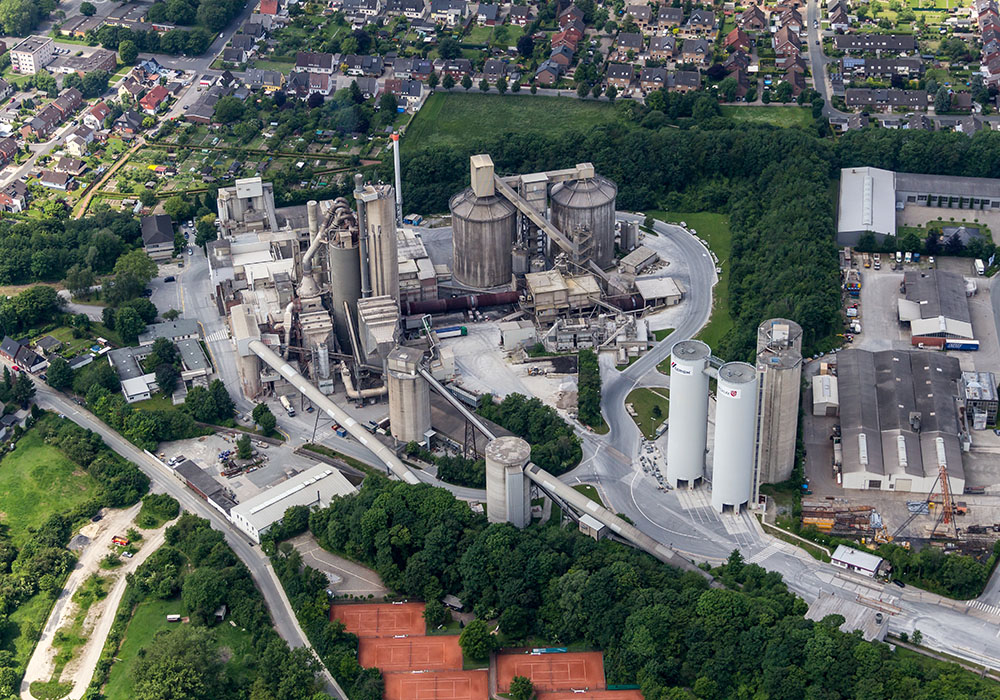Germany should continue to develop carbon utilisation and storage as climate protection options

Berlin, 25 September 2018
With Germany in danger of missing its climate protection targets, the utilisation and storage of carbon dioxide (CCU and CCS) from industrial processes could make a significant contribution towards closing this climate protection gap. acatech – National Academy of Science and Engineering believes that discussions concerning whether and how these technologies should be used and involving a broad cross-section of the public must begin as soon as possible so that the necessary infrastructure can be planned, approved and built. This will be key to enabling their deployment as effective climate protection measures from 2030. The acatech position paper on this subject is the product of a collaboration between experts from academia, the trade unions, industry, government and environmental organisations.
Germany is in danger of missing its targets for the reduction of greenhouse gas emissions as set out in the Paris climate agreement. The German government’s Climate Action Plan 2050, which was adopted in 2016, contains the first ever specific targets for energy-intensive industries – a halving of emissions by 2030 compared to 1990 levels, and comprehensive greenhouse gas neutrality by 2050. If Germany is to meet these targets, it will need to find additional ways of reducing CO2 emissions. It may prove necessary to resort to the utilisation and storage of carbon dioxide (CCU and CCS) in order to reduce CO2 process emissions that cannot be otherwise prevented.
According to Hans-Joachim Kümpel, head of the acatech project “CCU and CCS – Contributing to Climate Protection in Industry”, “We need a broad public debate to discuss how serious we are about meeting the Paris climate agreement targets and exactly what this will entail. That includes deciding whether we are prepared as a society to keep the option of using CCU and CCS on the table. We will need to accelerate the development of these technologies as soon as possible if we want them to be available for achieving large-scale reductions in CO2 emissions from 2030 on. It is important to stress that CCS should only be considered as an option for reducing emissions from industry that are an unavoidable consequence of the production process and cannot be utilised in any other way. We do not support the use of CCS to prolong coal-fired power generation.”
CCU (Carbon Capture and Utilisation) refers to the utilisation of CO2 in ways that reduce the amount of gas released into the environment, helping to lessen the associated climate effects. For instance, CCU technologies enable the sequestration of CO2 on a longer-term basis, e.g. in PVC products or by mineralising CO2 to create concrete aggregate. Moreover, once very large quantities of cheap renewable energy become available, CO2 could be converted into energy sources such as synthetic fuel. The use of these fuels would be climate-neutral, provided that the CO2 used to produce them had been captured from the atmosphere. Further concerted research is required to develop affordable CCU technologies that can be deployed at scale, since these are currently unavailable.
Carbon Capture and Storage (CCS) is an effective alternative for reducing unavoidable CO2 process emissions. CO2 can be stored deep under the earth’s surface, both onshore and offshore. If necessary it can subsequently be recovered for use as a raw material. CCS is subject to stringent safety tests and approval procedures at every stage of its deployment. According to Hans-Joachim Kümpel, “If we systematically develop the infrastructure required for the deployment of CCS, from 2030 on we could store between 50 and 100 million tonnes of CO2 from industrial processes annually, for a period of 100 years or more.” He adds that while the public tends to have a neutral or even positive attitude towards CCU technology, some sectors of society have serious reservations about CCS. The option of using CCS to combat climate change will only stand a chance if it enjoys the support of civil society, government, industry, NGOs and the relevant associations.
Since it will be some time before the large-scale deployment of either CCU or CCS becomes feasible, acatech recommends that discussions involving a broad cross-section of the public should begin as soon as possible. This will be indispensable for addressing the public’s reservations, continuing to develop suitable technologies and bringing them to market within the required timeframe so that the necessary infrastructure can be planned, approved, funded and built.
About the acatech project group
The acatech position paper “CCU and CCS – Contributing to Climate Protection in Industry” is the product of two years’ work by the project group. Presentations and discussions at a series of in-depth workshops allowed the group’s members to refine the paper’s content. A core of some 30 experts in the relevant fields took part in the project, including several leading figures from research institutions, public agencies and authorities, industry, environmental organisations, the trade unions, a standardisation institute and a number of consultants. The workshop participants from industry included representatives of companies and associations from the chemical, iron and steel and cement industries, as well as from a technology enterprise. The environmental organisations involved in the project were the Bellona Foundation, the European Climate Foundation, Germanwatch and WWF Deutschland. The project was funded by the European Climate Foundation, BASF SE, Covestro Deutschland AG, The Linde Group and the acatech Förderverein.




